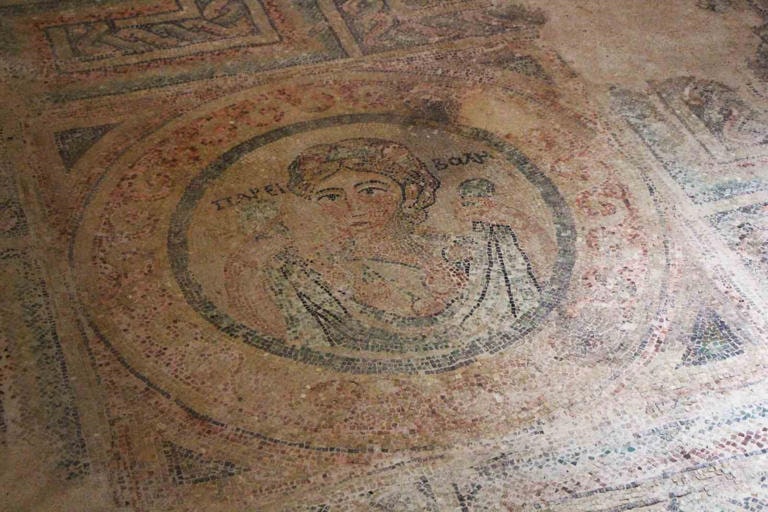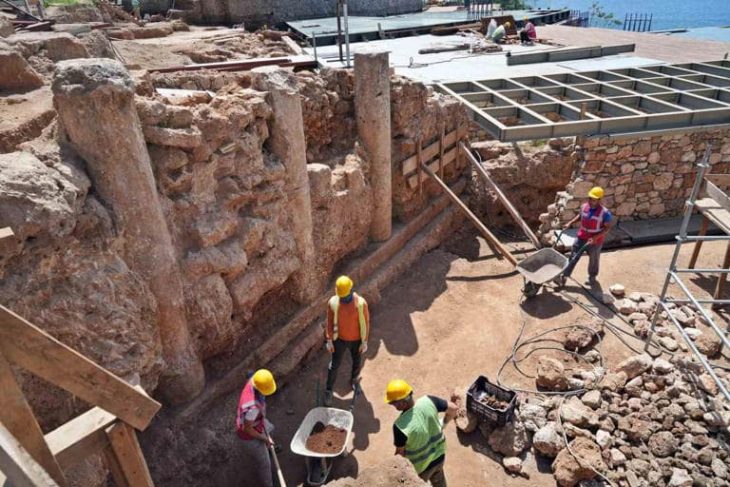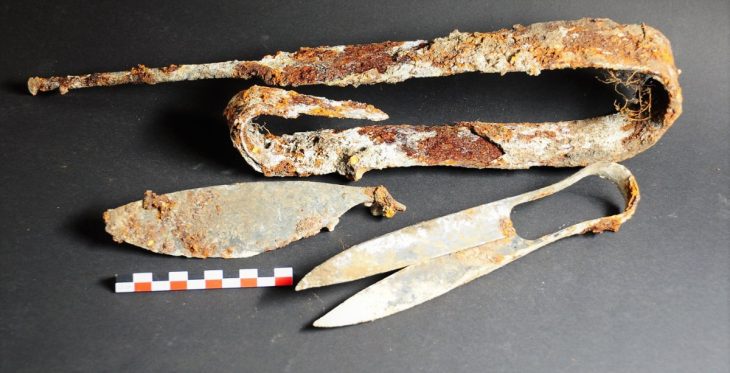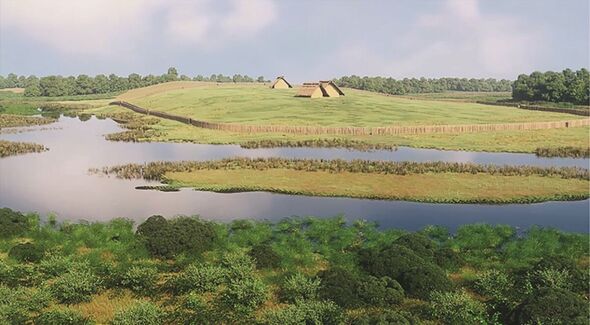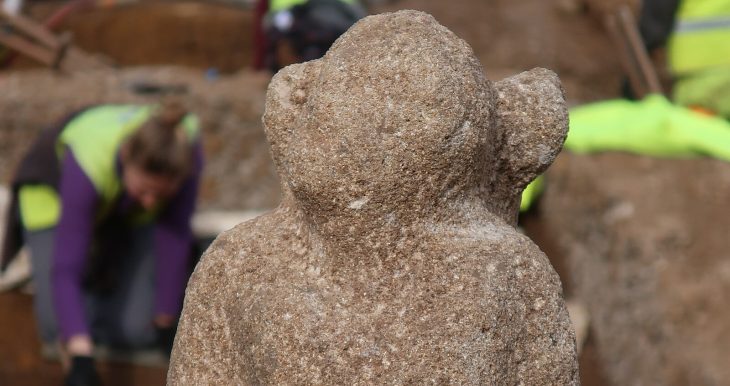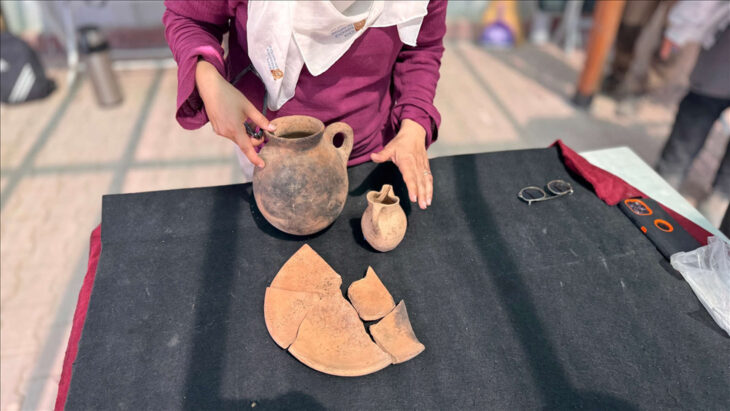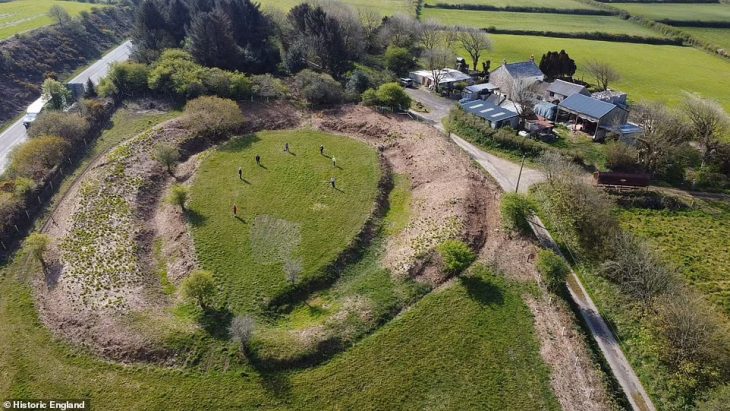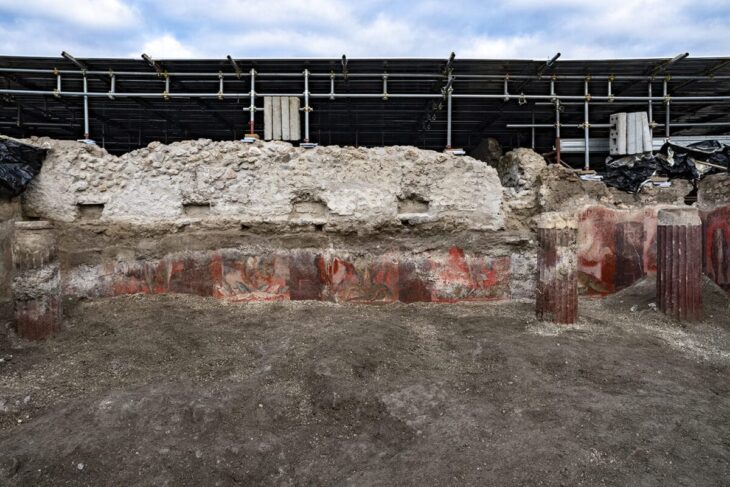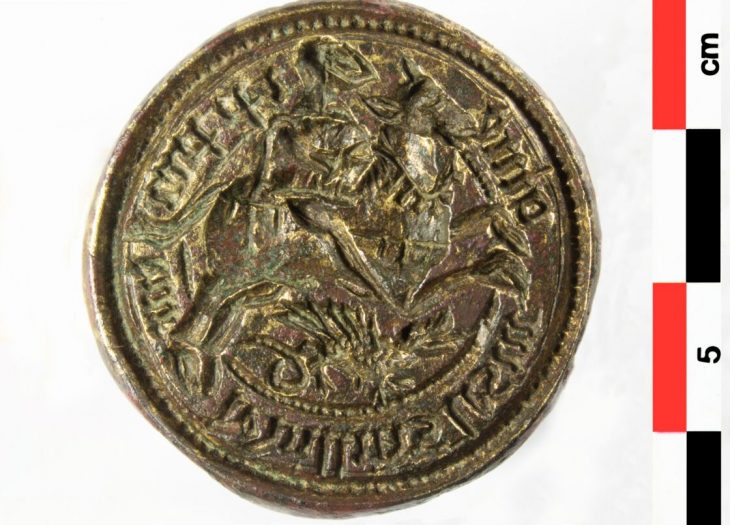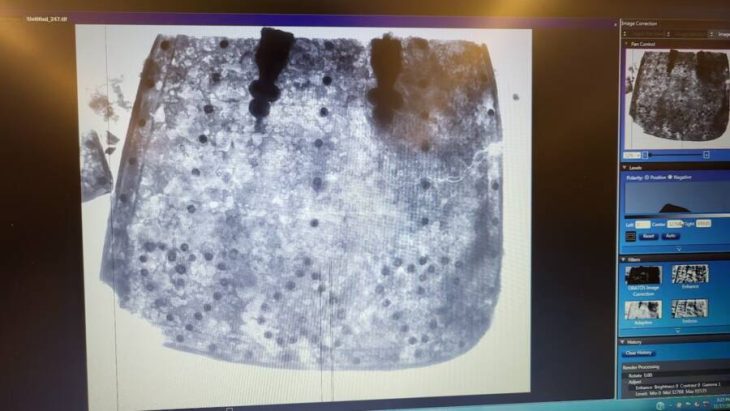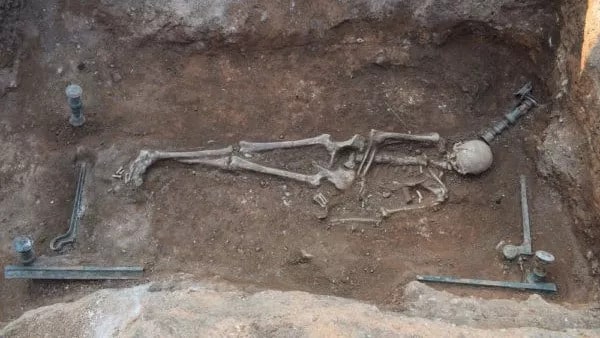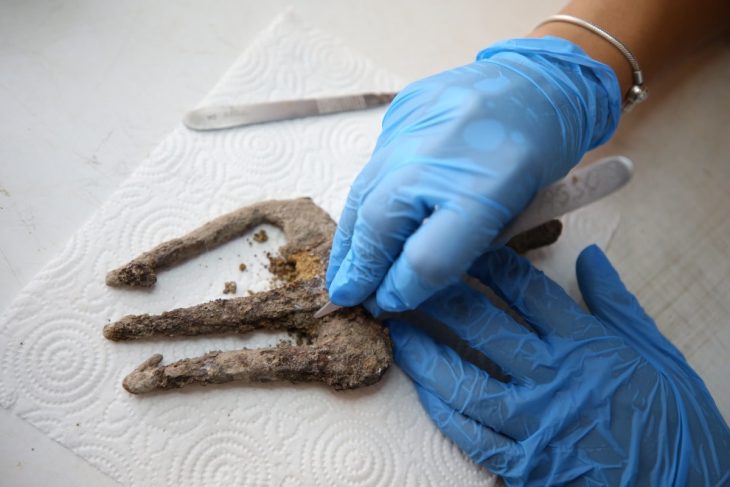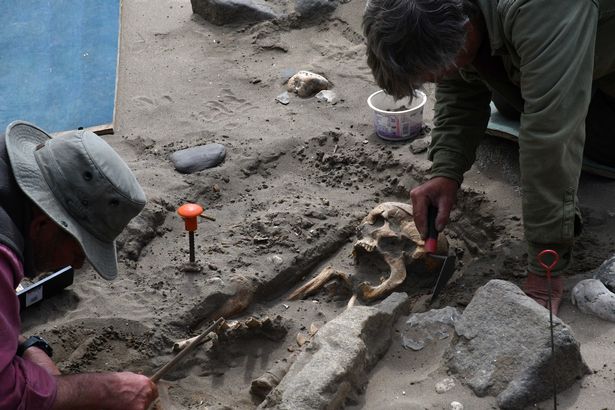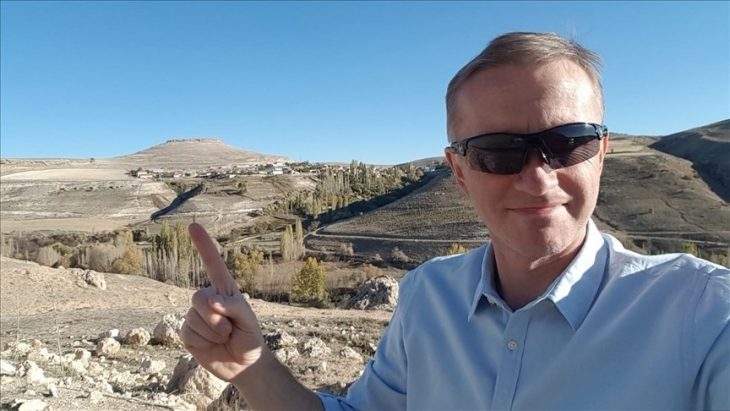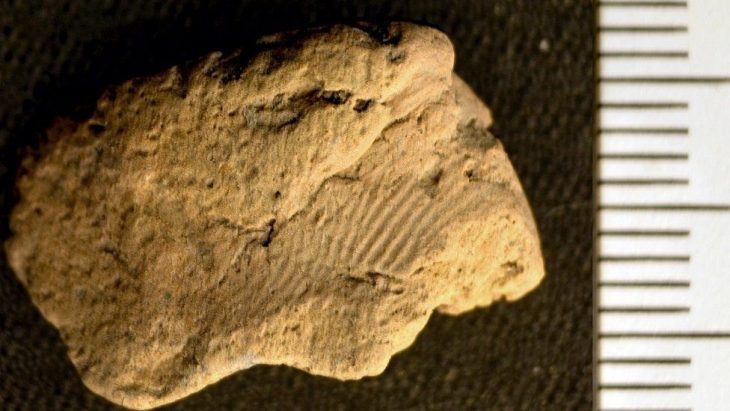The mystery of the 1,700-year-old mosaic, which was found during excavations in Amasya province in northern Turkey 11 years ago and started to be exhibited last year, has been solved. The research revealed that the Greek inscriptions ‘KTI – CIC’ and ‘ΠAPEM – BOΛH’ on the medallion with god figures in the center of the mosaic symbolize the Roman military unit.
The 80-metre floor mosaic was found in 2013 during a rescue excavation carried out by the Amasya Museum authorities near a high school at the entrance of the city. The artifact, which had two figures inscribed ‘KTI – CIC’ and ‘?APEM – BO?H’ and various geometric shapes, which were not seen in previous excavations, were covered and taken under protection after detailed examinations.
Stating that the central medallion stands out in naming the mosaics, Amasya Museum Director Celal Özdemir said, “The central medallion provides the name of the mosaic. In our research, there are Greek expressions ‘ΠAPEM-BOΛH’ around the figure of God Priapos. These expressions symbolize the Parem-Bole military unit.”
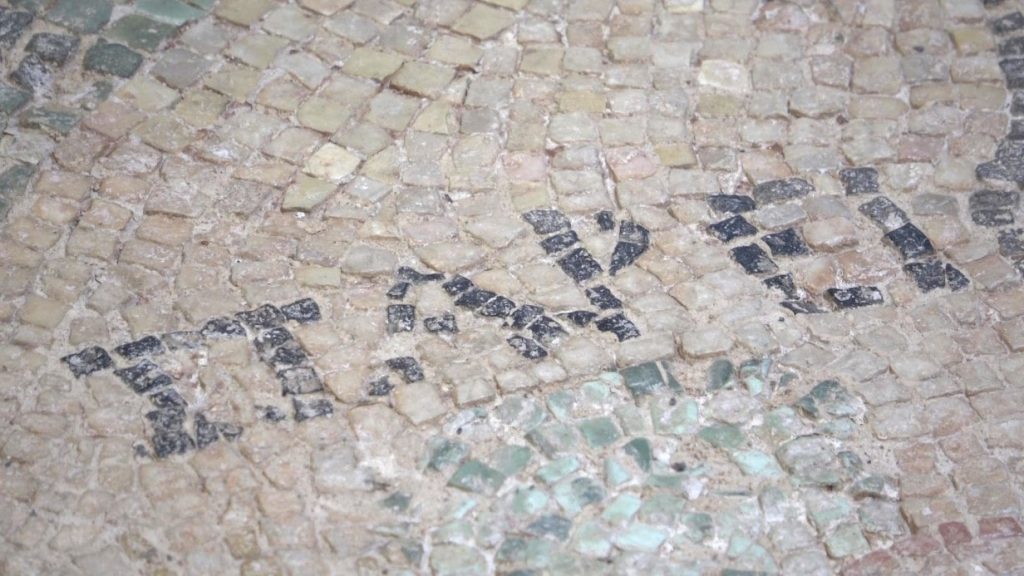
Greek mythology describes Priapus, also spelled Priapos, as the fertility god who guards male genitalia, fruits, vegetables, and livestock. The Roman god Priapus was worshipped during Hellenistic times, the period after classical Greece and the emergence of the Roman Empire.
“A mosaic of a military unit has never been found before”
Pointing out the importance of the discovery, Celal Özdemir said, “A mosaic belonging to a Roman military unit or battalion related to legions has not been found before in Anatolia. Researches show that the mosaic is unique in this respect.”
📣 Our WhatsApp channel is now LIVE! Stay up-to-date with the latest news and updates, just click here to follow us on WhatsApp and never miss a thing!!
Reminding that Amasya, which was among the important settlements of the Ottoman and Seljuks, was also one of the important capitals of the Hellenistic period, Özdemir said, “We expect new artifacts to be unearthed. These mosaics are extreme examples. As the excavations develop, the remains of the ancient city will be found.”
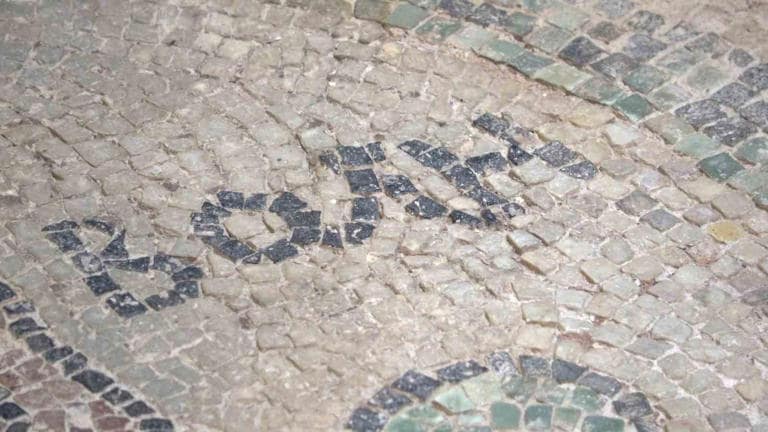
Located in the region of the Middle Black Sea, Amasya is founded on the slopes of Mound Harşena in Yeşilırmak Valley. Amasya’s history dates back to 4000 BC, making it one of the oldest continuously inhabited cities in the world.
Amasya has been ruled by several ancient civilizations, including the Hittites, Phrygians, Assyrians, Scythians, and Persians. One of the most significant periods in Amasya’s history was during the Kingdom of Pontus. The city served as the capital of this Hellenistic kingdom, and many of its historical sites date back to this era. With its deep-rooted culture and nature, the city is home to “Mount Harşena and the Rock Tombs of Pontic Kings,” which is included in the UNESCO World Heritage Tentative List, Amasya Castle, and museums.
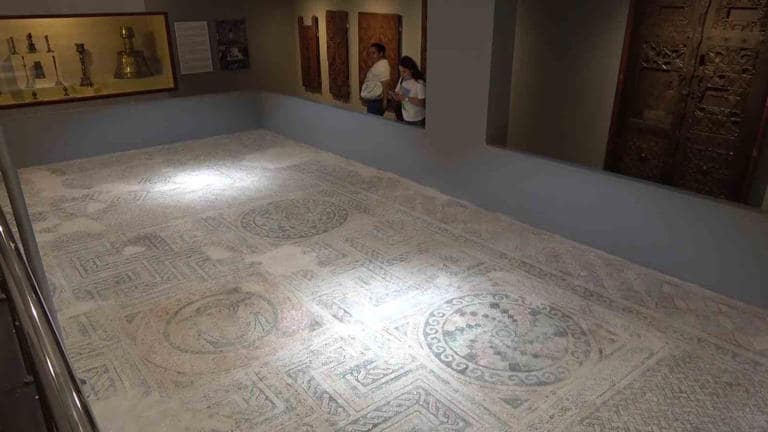
Under Roman and later Byzantine rule, Amasya continued to thrive as a cultural and administrative center. Many of the city’s architectural marvels, including bridges and fortifications, were built during this time.
During the Ottoman Empire, the city was chosen as a training ground for future sultans. Murad II and Selim I were among the Ottoman princes dispatched to Amasya to rule and gain experience in the complexities of statecraft.
Cover Image: İHA

